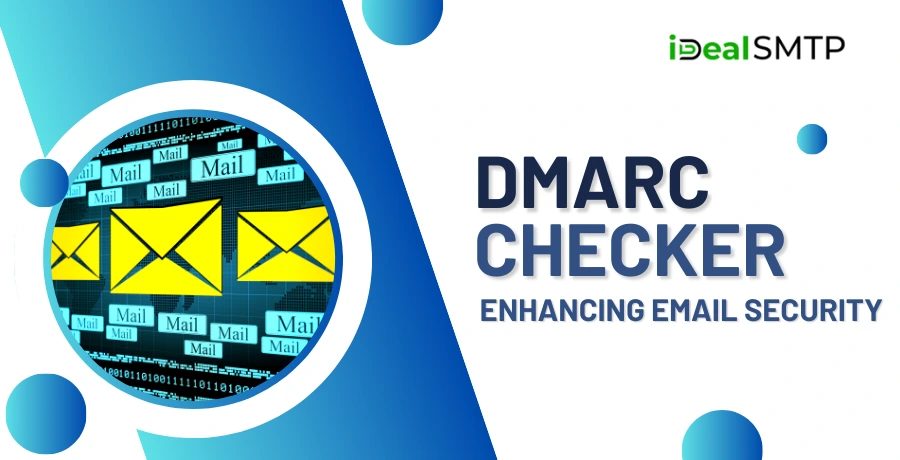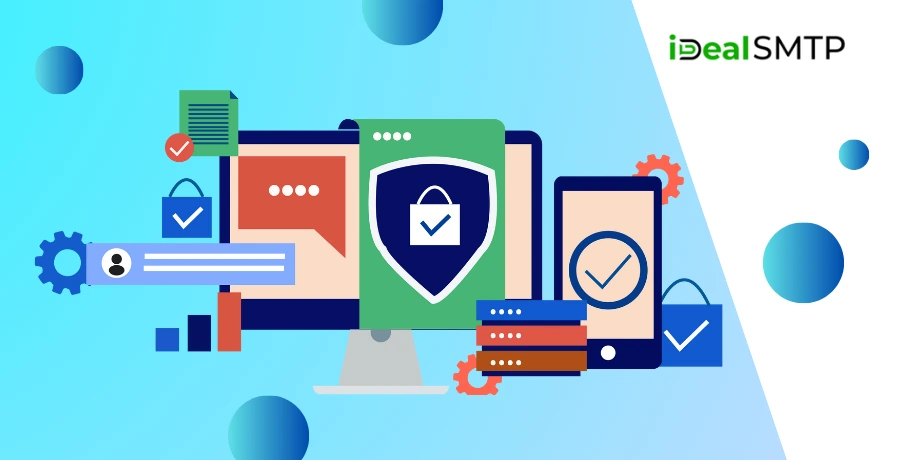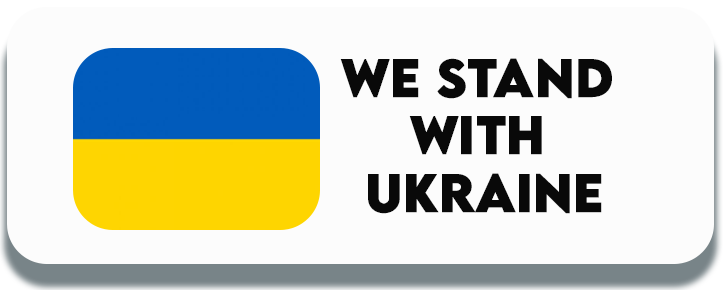Despite the existence of new technologies and possibilities in the sphere of digital communication, e-mailing occupies a strong position as one of the most efficient and topical means of official and informal communication. However, with its widespread use comes a growing challenge: email fraud. Phishing, spoofing, malicious, undemocratic emails, and several other attacks come in handy to gain unauthorized access to organizations’ and individuals’ emails.

This is where DMARC (Domain-based Message Authentication, Reporting, and Conformance) and DMARC checkers are in particular, they provide a rather powerful solution to guard your e-mail domains.
Table of Contents
Pricing
| Trail Plan | Standard Plan | Premium Plan | Professional Plan |
| $50 | $145 | $185 | $225 |
| Sending Limit | Sending Limit | Sending Limit | Sending Limit |
| 1000 Emails/Hour | 1500 Emails/Hour | 3000 Emails/Hour | 5000 Emails/Hour |
What is DMARC?
DMARC, Domain-based Message Authentication, Reporting & Conformance is an email authentication protocol that aims to protect your domain from being used in phishing scams and other similar scams and con jobs related to e-mail forging. It is based on two earlier standards, SPF (Sender Policy Framework) and DKIM (DomainKeys Identified Mail), which allow only those senders with permission to send the messages on your behalf.
By implementing DMARC, you can:
- Ensure emails that are in your domains are real.
- Fail to protect your brand image.
- Minimize how your emails will end up in the spam folder.
The Role of a DMARC Checker
Essentially, a DMARC checker is an application developed to confirm the status of a given domain about DMARC. It gives you information on whether your DMARC policy is configured correctly or whether there are problems with your email authentication.
Using a DMARC checker allows you to:
- Give attention to protecting your domain from spoofing.
- SF, DKIM, and DMARC record sets are compatible with SPF, DKIM, and DMARC record sets, respectively.
- To anticipate undesirable and unauthorized use of the email authentication equations, results should be constantly checked.
How Does a DMARC Checker Work?
A DMARC checker inspects the DMARC record posted in the DNS (Domain Name System) of a domain. Here’s a step-by-step breakdown of how it works:
- DNS Lookup- The DMARC checker retrieves the record of DMARC linked with a specific domain with the help of DNS.
- Record Validation- It tests the configuration of the DMARC record using the syntax and content to validate it.
- Policy Assessment- The tool also considers the DMARC policy (none, quarantine, or reject) and considers it relative to a domain’s email authentication strategy.
- Reporting Analysis- The checker can assist in reviewing the aggregate and the forensic report which is available for the domain where reporting is enabled.
Key Features of a Reliable DMARC Checker
You must be careful because there is a lot of misleading information out there, and not all DMARC checkers are the same. When selecting one, look for the following features:
- Comprehensive Validation- End-to-end email authentication should consist of validating DMARC, SPF, and DKIM records by the tool.
- User-Friendly Interface- It is possible to note that a clear and classic interface will help to avoid such difficulties for ordinary, non-technical users.
- Detailed Reporting- It is very important to have reports that accurately cover problems as well as offer solutions to be offered.
- Real-Time Checks- The checks can be performed online hence updating of records is done in real time.
- Scalability- It makes sense that a multi-domain enterprise should be able to process large-scale validation with the DMARC checker to great efficiency.
Benefits of Using a DMARC Checker
Implementing a DMARC checker as part of your email security strategy offers several advantages:

- Enhanced Email Deliverability- With properly set up records of DMARC your emails are less likely to be marked as spam.
- Improved Domain Security- Safeguarding from spoofing and phishing strengthens the security status of your organization as a whole.
- Brand Reputation Safeguard- With email fraud that concerns a domain, the brand’s reputation and its recognition are at risk.
- Compliance with Standards- Today, most industries need secure email authentication measures to meet cybersecurity legislation standards.
Common Issues Identified by a DMARC Checker
DMARC is easy to implement but configurations hold risks if not well done or implemented wrongly. A DMARC checker can help identify:
- Incorrect Syntax- As with any other record, errors such as missing symbols or wrong positioning of the symbols in the DMARC record will make it have no impact.
- Misaligned Policies- Self-SPF or Self-DKIM record is not as per your DMARC policy, then the utmost valid messages also get rejected.
- Missing Reports- It becomes difficult to monitor unauthorized usage if proper reporting is not enabled.
- Weak Policies- A DMARC policy set to “none” does not fight spoofing at all and it is safer to move up to “quarantine” or “reject” instead.
Best Practices for Using a DMARC Checker
To maximize the benefits of a DMARC checker, follow these best practices:
- Start with a Policy of None- When using the DMARC initially, recommend using the policy of “none” to ensure the flow of e-mails does not influence its delivery.
- Enable Reporting- Collaborate with the IT administration to acquire both, aggregate, and forensic reports regarding your domain’s email traffic and track suspicious activity.
- Gradually Strengthen Your Policy- After you confidently determine the first set of filters pass authentication, slowly bring up your ‘quarantine’ or ‘reject’ policy.
- Regularly Check Your Records- Email systems and configurations change over time, therefore, using a DMARC checker frequently will help with continuous protection.
Common Misconceptions About DMARC
Although DMARC is a useful solution for securing email domains some myths may occur during its setting. Here are a few to be aware of:
DMARC is a One-Time Setup
DMARC is not an automated tool that one implements then does not have to worry about any longer. Whenever there is development, within the email systems, the DMARC records may require alteration especially if other email sources come into play. To guarantee that your policies are proper over time, it is crucial to check them with a DMARC checker in a routine.
DMARC Solves All Email Security Problems
Though DMARC is very important for email security, it is also critical to acknowledge that it is only a solution, not a solution. It should not be used as a standalone product but with other products such as a secure email gateway, encryption among others, and user awareness.
A “None” Policy Means No Protection
Some may think or have gathered that no policy, or none as in DMARC is no policy at all to protect. In reality, the “none” policy is a monitoring tool that is very useful in understanding email authentication. It is good to be implemented during the first stages of a campaign so that you can know how the existing emails are being dealt with before bringing in stricter rules.
DMARC Prevents Spam
Even though none of the emails it filters can be considered spoofed or a part of phishing or harboring any forged addresses, DMARC does not directly combat spam. Like any email filtering technique, email spam filtering also requires Fortification tech using other related technologies like Bayesian filtering, reputation-based systems, and user input coupled with DMARC.
The Business Impact of DMARC Checks
For businesses, this means that it is possible to suffer dire consequences of poor DMARC policy implementation. Here are a few key reasons why conducting regular DMARC checks is so important:
Customer Trust
When customers have your domain linked to their inbox, they always expect those messages to be original. cybercriminals impersonating your domain hurt the customer’s perception of your firm. In the simplest sense, a correctly set up DM Marc record helps to make sure that only you and your customers can send and receive emails from you respectively.
Financial Protection
Phishing attacks lead to huge loss of finances. For instance, 21 BEC attacks can take advantage of employees and make them wire money or release information that they should not. Some of these dangers are prevented by DMARC as it checks whether emails coming from a specific domain are authentic or not.
Protecting Business Relationships
Today, e-mail is one of the primary means of communication in the sphere of business and commerce. When such deceivers emulate your domain and scam your clients or partners, it may lead to conditions where you experience a loss of both money and goodwill. DMARC checks help to keep your business relationships trustworthy and safe.
Reputation Management
Having a good reputation concerning your domain is something that plays a key role when it comes to delivering emails. When your domain is used for spam or fraud, then the services can be blocked and this results in some emails going to spam or being rejected altogether. When you use DMARC, and conduct a check, you ensure that your domain is not regarded as a source of spam and that your emails get through to the intended recipients.
The Future of DMARC and Email Security
For this reason, email-based threats these days are ever-changing and therefore will be the trends in email security. However, this evidence shows that DMARC is an important industry in today’s security but there are tendencies that other standards & recommendations may appear in the future as well. Daily checks with a DMARC checker will also assist the business to adapt to new threats as they emerge.
The use of DMARC and other similar techniques in email communication will grow thus enhancing the general security of emails as a medium of communication. Moreover, as companies are experiencing growing regulatory pressure for their data assets, such as using the DMARC checkers will become paramount.
Conclusion
In the modern world, no organization can afford to compromise its mail security. First of all, a DMARC checker is your best friend, as the tool will help you verify, analyze, and improve your email authentication. Using a reliable tool that provides a DMARC check, you will be able to prevent the misuse of your domain for spoofing and phishing and improve the overall email delivery rate, as well as your brand image.
For any business, including small and large enterprises, proper DMARC usage and checking for frequent errors with the help of a DMARC checker are the keystones for protected and reliable email correspondence. It isn’t wise to wait for your domain to become risky; there are actions you can take right now to strengthen your email protection.







